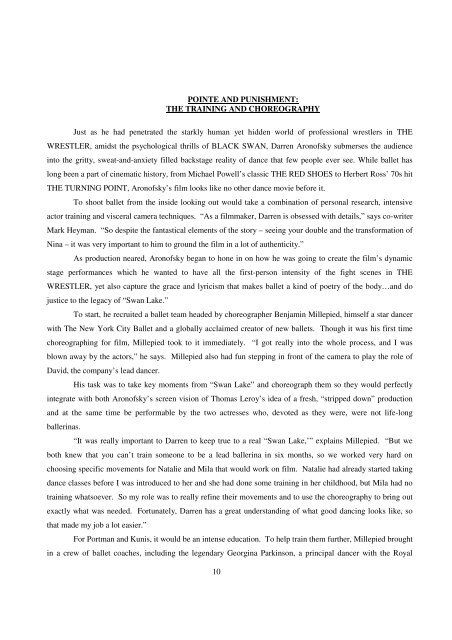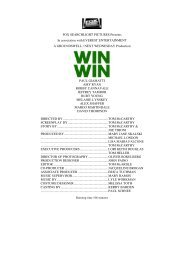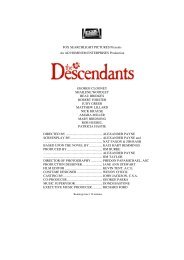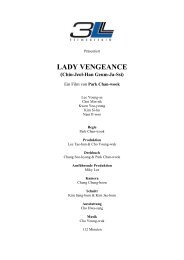Black Swan FINAL V2-intl - Central-Kino
Black Swan FINAL V2-intl - Central-Kino
Black Swan FINAL V2-intl - Central-Kino
Create successful ePaper yourself
Turn your PDF publications into a flip-book with our unique Google optimized e-Paper software.
POINTE AND PUNISHMENT:<br />
THE TRAINING AND CHOREOGRAPHY<br />
Just as he had penetrated the starkly human yet hidden world of professional wrestlers in THE<br />
WRESTLER, amidst the psychological thrills of BLACK SWAN, Darren Aronofsky submerses the audience<br />
into the gritty, sweat-and-anxiety filled backstage reality of dance that few people ever see. While ballet has<br />
long been a part of cinematic history, from Michael Powell’s classic THE RED SHOES to Herbert Ross’ 70s hit<br />
THE TURNING POINT, Aronofsky’s film looks like no other dance movie before it.<br />
To shoot ballet from the inside looking out would take a combination of personal research, intensive<br />
actor training and visceral camera techniques. “As a filmmaker, Darren is obsessed with details,” says co-writer<br />
Mark Heyman. “So despite the fantastical elements of the story – seeing your double and the transformation of<br />
Nina – it was very important to him to ground the film in a lot of authenticity.”<br />
As production neared, Aronofsky began to hone in on how he was going to create the film’s dynamic<br />
stage performances which he wanted to have all the first-person intensity of the fight scenes in THE<br />
WRESTLER, yet also capture the grace and lyricism that makes ballet a kind of poetry of the body…and do<br />
justice to the legacy of “<strong>Swan</strong> Lake.”<br />
To start, he recruited a ballet team headed by choreographer Benjamin Millepied, himself a star dancer<br />
with The New York City Ballet and a globally acclaimed creator of new ballets. Though it was his first time<br />
choreographing for film, Millepied took to it immediately. “I got really into the whole process, and I was<br />
blown away by the actors,” he says. Millepied also had fun stepping in front of the camera to play the role of<br />
David, the company’s lead dancer.<br />
His task was to take key moments from “<strong>Swan</strong> Lake” and choreograph them so they would perfectly<br />
integrate with both Aronofsky’s screen vision of Thomas Leroy’s idea of a fresh, “stripped down” production<br />
and at the same time be performable by the two actresses who, devoted as they were, were not life-long<br />
ballerinas.<br />
“It was really important to Darren to keep true to a real “<strong>Swan</strong> Lake,’” explains Millepied. “But we<br />
both knew that you can’t train someone to be a lead ballerina in six months, so we worked very hard on<br />
choosing specific movements for Natalie and Mila that would work on film. Natalie had already started taking<br />
dance classes before I was introduced to her and she had done some training in her childhood, but Mila had no<br />
training whatsoever. So my role was to really refine their movements and to use the choreography to bring out<br />
exactly what was needed. Fortunately, Darren has a great understanding of what good dancing looks like, so<br />
that made my job a lot easier.”<br />
For Portman and Kunis, it would be an intense education. To help train them further, Millepied brought<br />
in a crew of ballet coaches, including the legendary Georgina Parkinson, a principal dancer with the Royal<br />
10
















